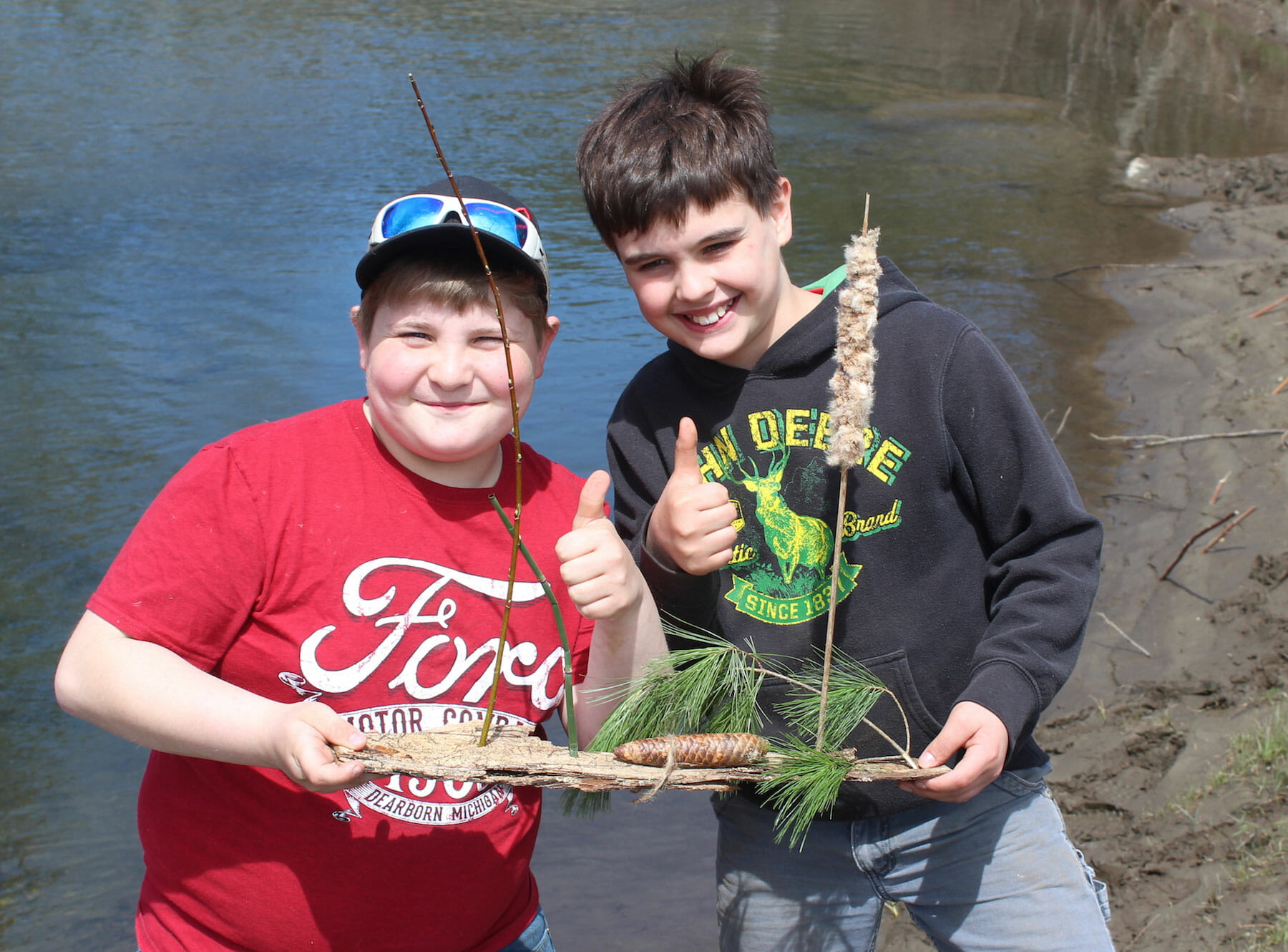In celebration of Earth Day, Sharon Central School students and local volunteers took part in a day-long planting project to help restore the banks of the Salmon Creek in Salisbury on Tuesday, April 24.
At the annual Salmon Kill Watershed Festival organized by Trout Unlimited and the Housatonic Valley Association, students planted native trees and shrubs such as sycamore, elderberry and dogwood to buffer and stabilize the creek bank. Taking a break from the hard, physical work, they also engaged in hands-on learning activities about watershed science, mapping and GPS skills, art with natural materials, fly fishing and ways to care for our local environment.
Organizers used the event to showcase the power of place-based learning, which increases students’ sense of stewardship and environmental consciousness and strengthens their attachment to their community. Experiences outside of the classroom help kids connect textbook learning to the world around them.
“We hope that being out here, learning outdoors and getting to know their local watershed will inspire kids to make good decisions and connect them to where they live,” said Tracy Brown, northeastern restoration coordinator for Trout Unlimited.
“A lot of kids aren’t aware of the types of jobs you can have helping the environment,” said Stacy Demmings, GIS Manager with HVA. “They get so excited to learn that they can do fun things like make maps, plant trees and be outside as a career someday.”
Teams of volunteers from local businesses Salisbury Bank & Trust Co. and BD Canaan also highlighted their companies’ commitment to the environment and community, helping with planting and keeping the kids on-task.
For the past six years, Trout Unlimited has partnered with the local community and private landowners to complete the Salmon Creek Enhancement and Restoration Project with funds secured from the GE Natural Resource Damages (NRD) fund.
Planting buffer areas of shrubs and trees along riverbanks is a restoration technique that improves both habitat and water quality. Plant roots provide bank stability and filter the water entering the river zone. The plants shade to the creek and contribute nutrients and insects to the waterway. The long-term goal of the Salmon Creek project is to improve habitat for native and wild trout, which benefits all of the wildlife – and fishing enthusiasts – throughout the Housatonic Valley watershed.
Funding for the event was provided by Salisbury Bank, Sharon Land Trust, Becton Dickinson, the Oppenheimer Fund of the Berkshire Taconic Community Foundation, U.S. Fish and Wildlife Service, Trout Unlimited and the Housatonic Valley Association.
About the Housatonic Valley Association:
HVA’s mission is to protect the natural character and environmental health of the entire Housatonic River Watershed for this and future generations. The Watershed covers nearly 2,000 square miles, and encompasses parts of 83 communities from the Berkshires south to Long Island Sound. HVA fulfills its mission through partnerships, research, education, advocacy, and providing technical assistance to municipalities and community organizations. Headquartered in Cornwall Bridge, Connecticut, HVA has a strong, credible record of land and river conservation.



